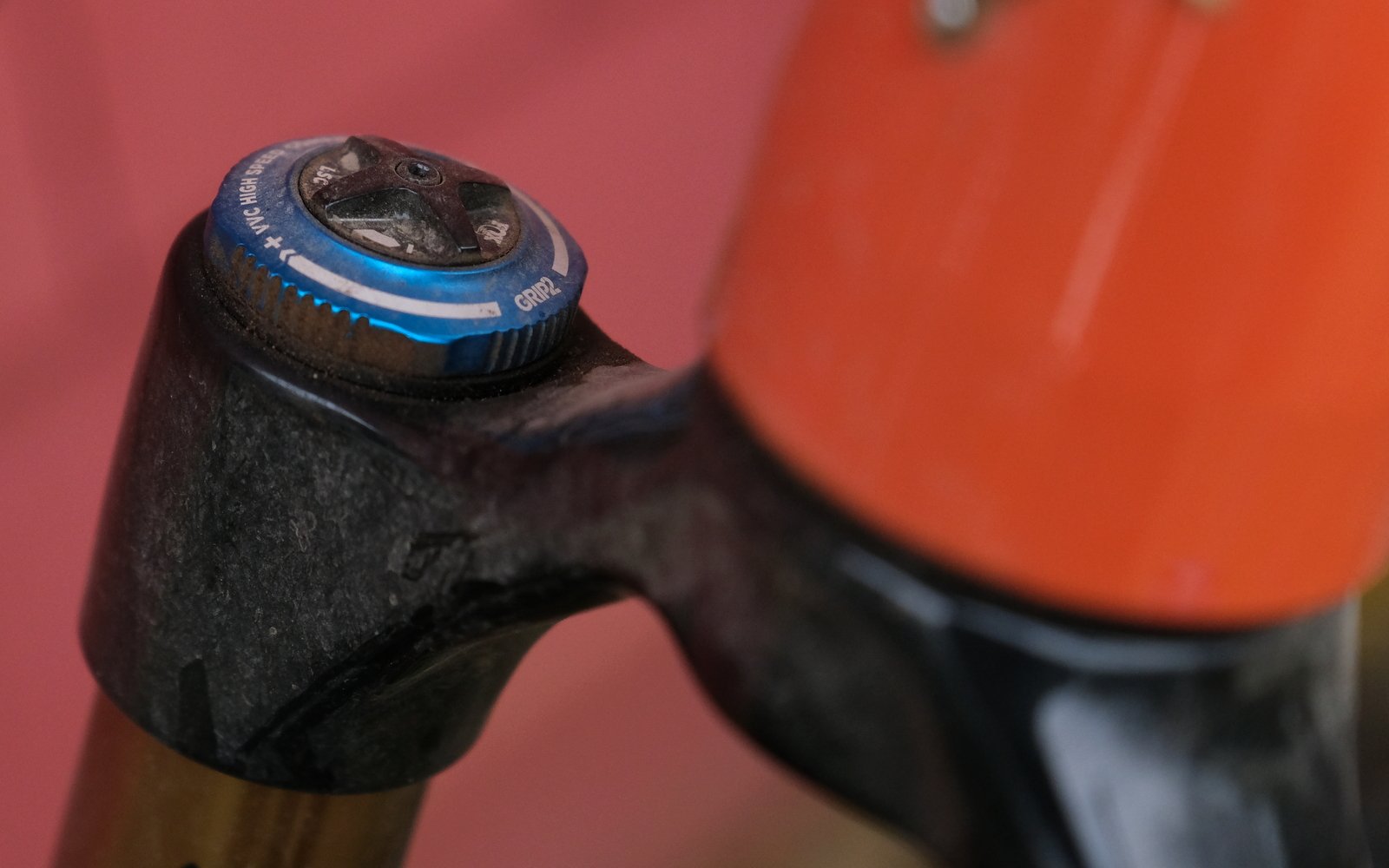
Review
2023 Fox Factory 36 Grip 2 - 160 mm Fork
At this point in my life as a bicycle tester, I’ve been questioning why I am doing things. Am I adding value? Does the process create enjoyment? Do I know what I’m talking about? With certain things, the answer is “yes”, and with others, not so much.
Testing forks is one of those things that I tend to avoid. I feel like there are only so many things that I can say about a suspension fork, and only so much nuance that I can sense out of the front of my bicycle. As well, I truly hate the phrase “mid stroke support.” I’m happy to think about it in the context of a bicycle review, but typing up a bunch of words about a fork doesn’t excite me.
So reviewing the new Fox 36 didn’t feel like something I wanted to do. What could I possibly have to say about a fork that was just slightly different than one I’d already ridden and talked about a bunch? That felt like torture, and I steered away and eventually forgot the conversation. And then a truck showed up a month later and deposited a brand new 36 on my doorstep. Life’s a bit weird when the prospect of running a brand new US$1149/CAD$1499 fork fills you with angst and trepidation.
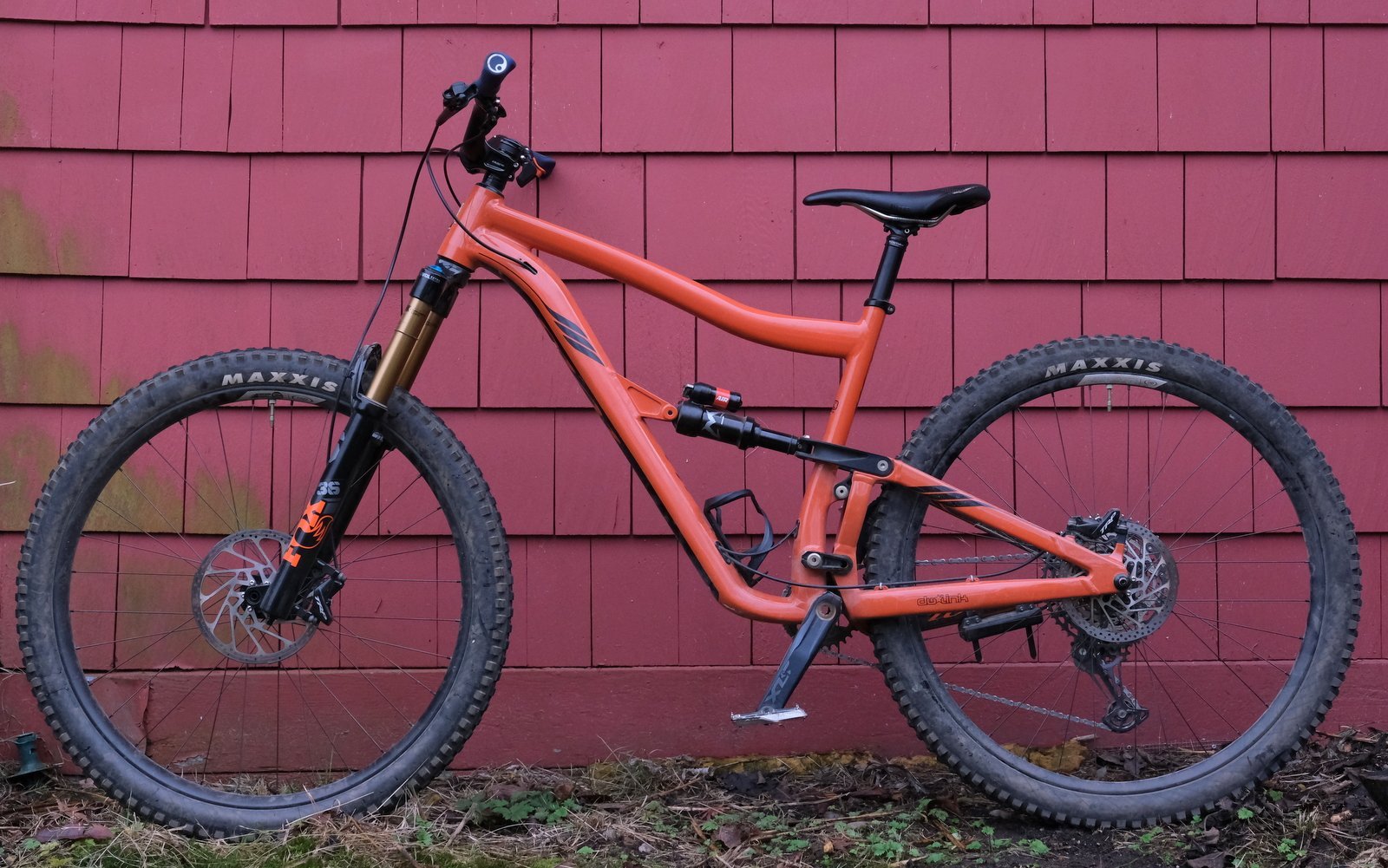
I've managed to piece together a shockingly colour-coordinated bike here. In person you'd be blown away by all of the black, orange and blue highlights.
The Basics
You could be forgiven for looking at this fork and wondering what is “new”. First, it looks a whole lot like the MY2022 version of this fork. Next, well, I’ve taken my sweet time writing this up, so you’ve probably already seen a few dozen or more out on the trail.
The biggest change is in the crown. “Increased steerer-tube overlap at the CSU” which improves stiffness and durability, all while dropping a bit of weight, is what the website tells us. “ But why would Fox need to increase durability on a fork that was just released within the last few years?” you ask. Find a burly guy in the parking lot on your next ride and ask him. And in case you’re wondering, axle-crown heights remain the same.
Next…well…there might not be a next. Are there other changes? Let me check in with Fox.
For MY23 the FOX 36 receives an update in the form of a new crown with updated design and engineering for more steer tube overlap improving durability and maintaining stiffness while dropping 20 grams.
Okay. So that’s the only change.
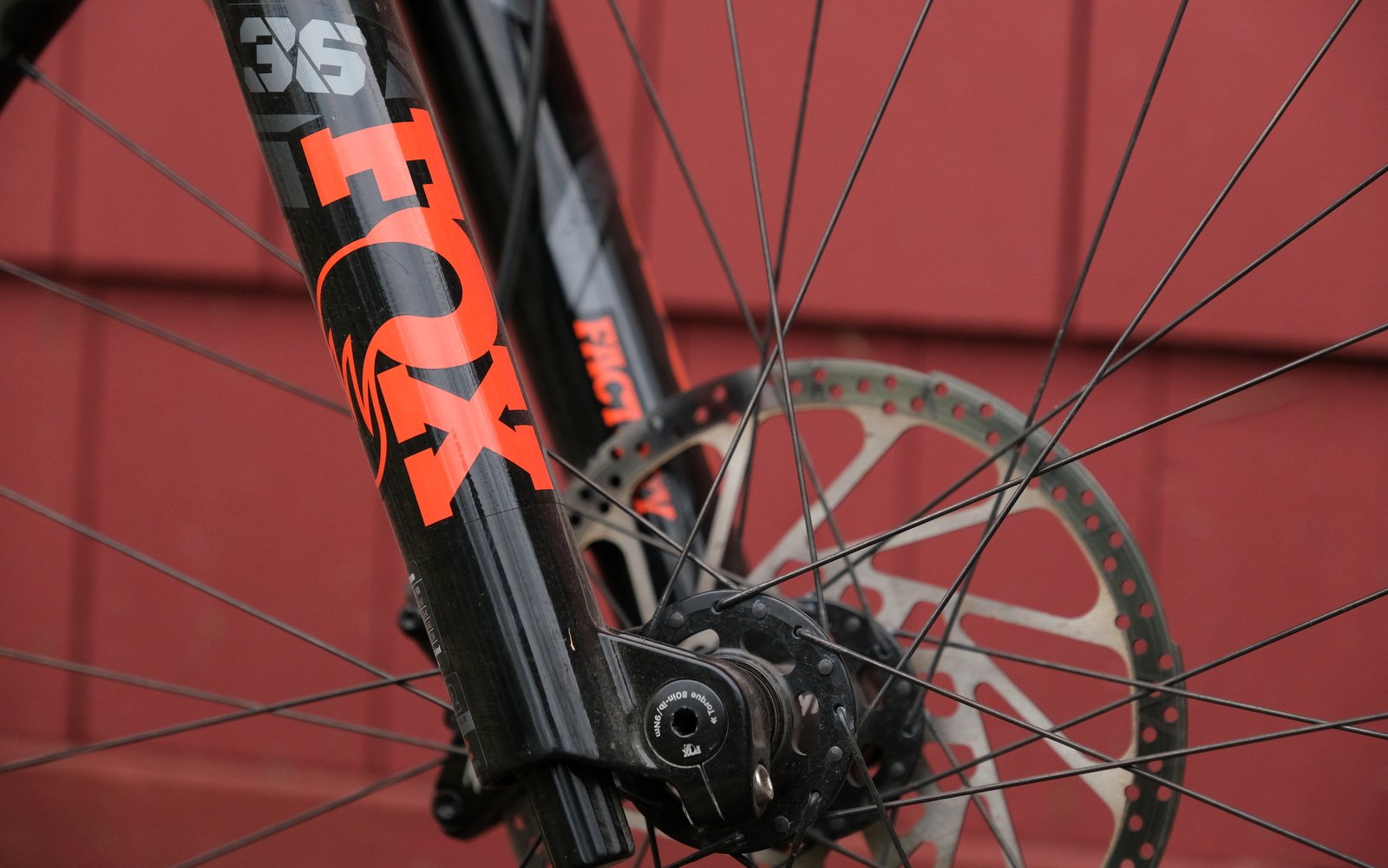
Nothing has really changed down at this end...
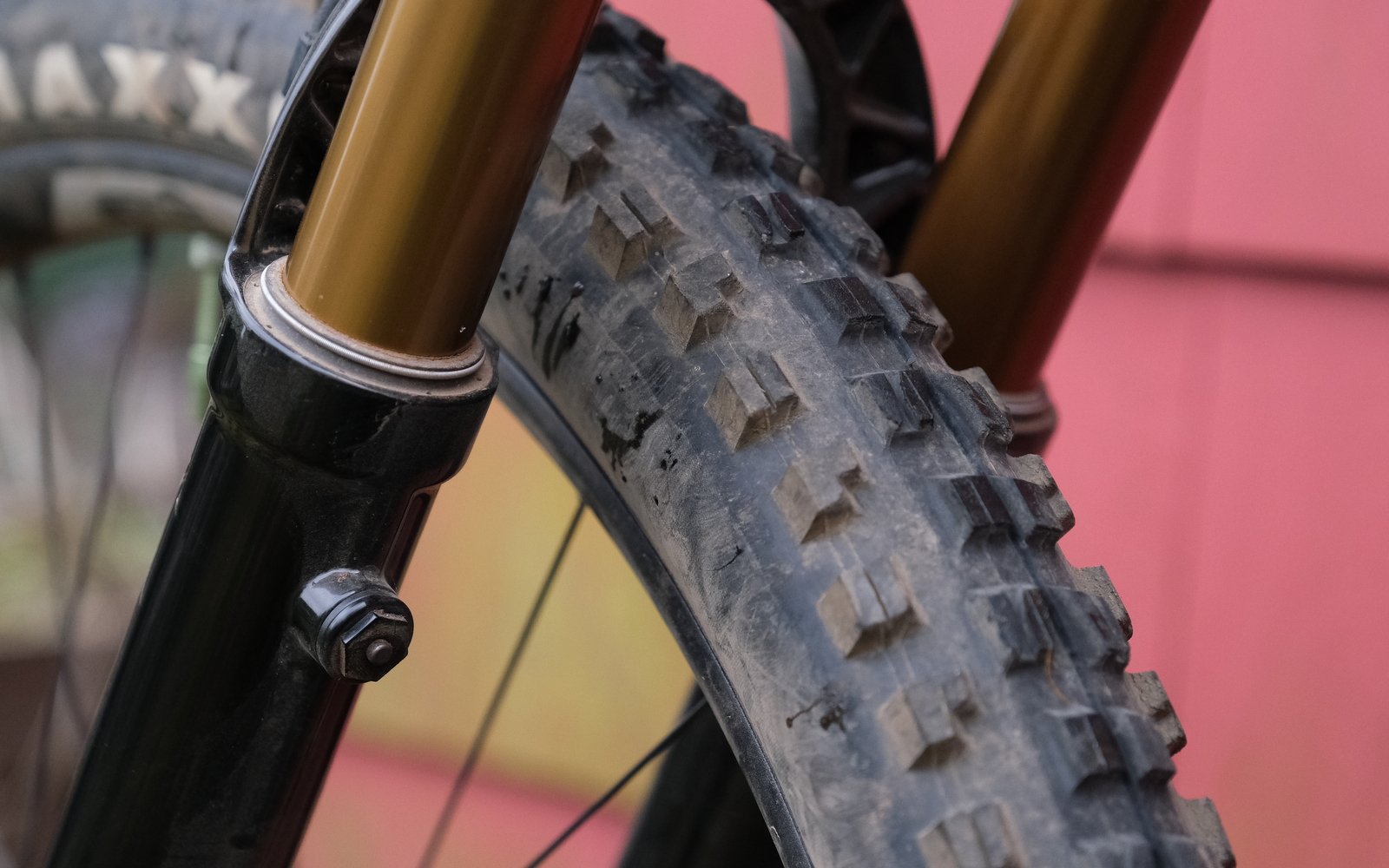
And we still got the F.A.R.T.s on the backside too.
Touching and feeling and setting up
So, we’ve received the fork now, and we’ve understood what has changed. But how did the fork make me feel? Well, pretty darn good, actually. Pulling that glossy, shiny, black and gold mound of expensive metal out of the box and flashing it around in my front yard turned my bad attitude around a little bit. I mean, maybe at that price they could include the aftermarket mudguard in the box, but that’s about the worst I can say about the experience. So, I was impressed, and as I was cutting the steerer tube with a hacksaw my neighbor came out screaming “What are you doing!” He was impressed too, apparently.
Once the steerer was cut, the fork found its way onto the front of my trusty Ibis Ripmo AF. This bike is still kicking around in my storage locker and it has seen a fair amount of riding time both during and after the testing period. The 36 is replacing a DVO Onyx with the same travel measurements.
Post install, I dusted off my 36 settings and prepared to dial them into this fork. As mentioned above, I have very recently ridden what feels like several 160mm travel 36’s with the Grip 2 damper, one on the front of the Spectral 29, one on the front of the Arrival and I feel like a couple more that have slipped my mind. I ran the Arrival fork a touch stiffer than on the Spectral, so I thought I’d split the difference. But I caught myself. Every new suspension product deserves to start with the base settings as supplied by the manufacturer.
Not that this was a huge departure. My past experience with the 36 had me running the recommended clicks (give or take), removing any installed tokens and running a smidge under the recommended air pressure. This hurts my ego a tiny bit (as max tokens and pressure is where it’s at, people say), but I’ve learned a few things about my riding style over the last few years and I’ve come to accept that I tend to run rear ends a little harder and front ends a little bit softer. “You need to be more centered in your stance, Dave” is something that is said to me on occasion. That may be true, but there’s also just something about running XL bikes with shorter rear center ratios, and having long-assed legs, that leads to me being a bit more rear-biased than the average individual. My experience with stock Fox settings is that I tend to struggle to use full travel, which leads to the adjustments discussed above. So, this time around, rather than diving into that comfortable little rut, I left the stock token in and kept the pressure where it was.
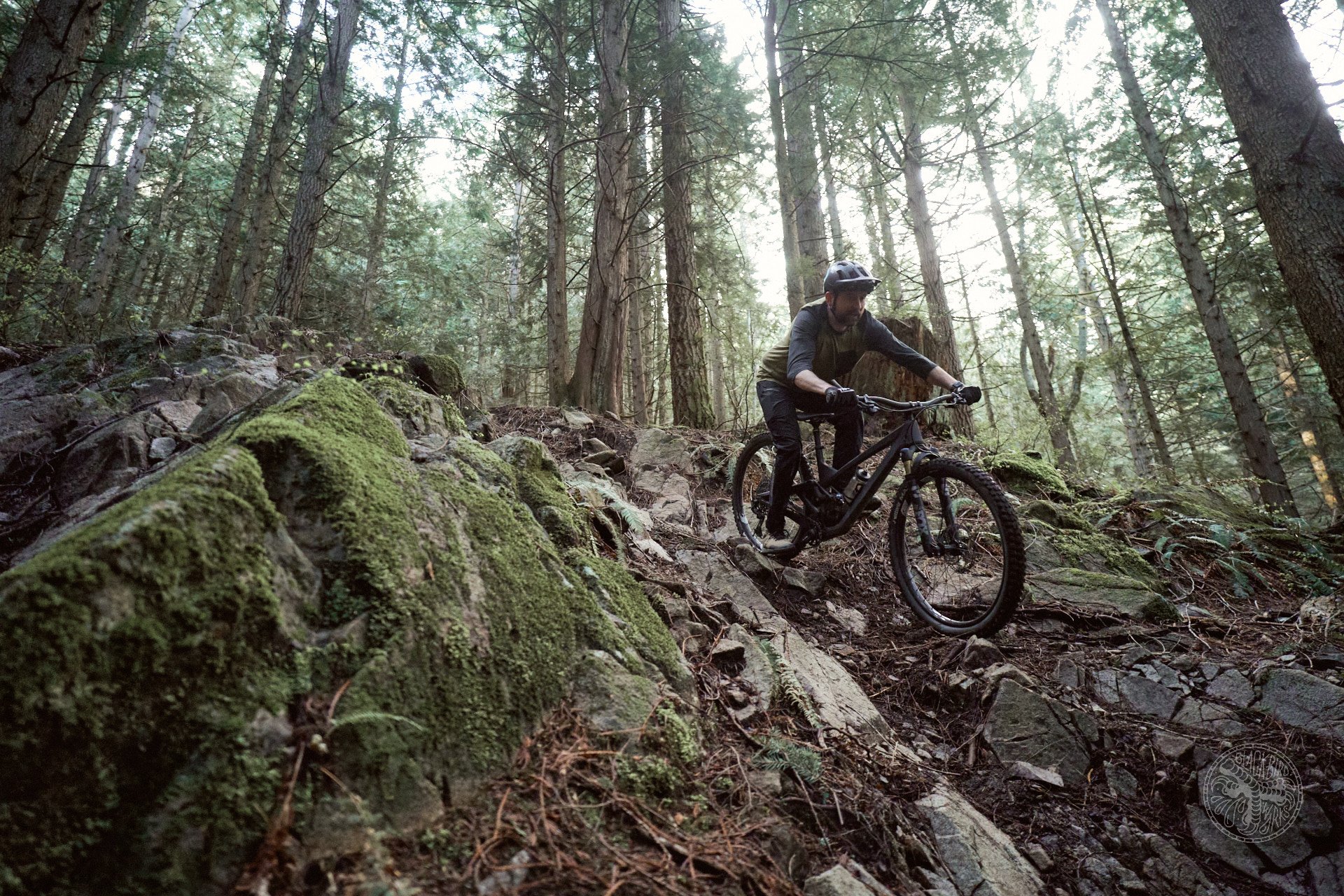
This is the photo that caused me to re-evaluate. It does look like there's some force going through the front end of this bicycle, but when I saw this photo it felt like I probably shouldn't be running that deep into the travel.
First Rides
To give myself as much to work with as possible, I rode the same lap two days in a row, once on the DVO Onyx and the next day on the new 36. I wantedl to limit my variables and have the DVO fresh in my mind. This isn’t a totally fair comparison for the DVO as it has quite a bit of mileage without much maintenance save for a couple of lowers services, but it is my baseline.
Pretty immediately I noticed that the 36 is a lot less supple than the Onyx. The ability to dial in the top end of your travel is one area where DVO really stands out. I’ve seen a few people online complain about the OTT adjustment not working all that well for them, but for me, this isn’t the case. The DVO is super smooth off the top and I feel it must have something to do with the coil negative spring.
Once the speed picked up though, I had to recalibrate. Experiencing a fresh 36 on the front of a familiar bike was a bit of an eye opener. Putting it another way, the 36 really is a spectacular fork. It has been over-shadowed by the 38 in recent years, but on the terrain that I’m facing on the Ripmo, it works exceptionally well.
Where it stood out the most was on faster, repetitive hits. It always feels like it’s ready for whatever is coming next and is great through the fast and the rough. My typical struggle to use full travel at stock pressure remained, but the renewed confidence I had with the bike through the rough supported my little experiment with stock settings.
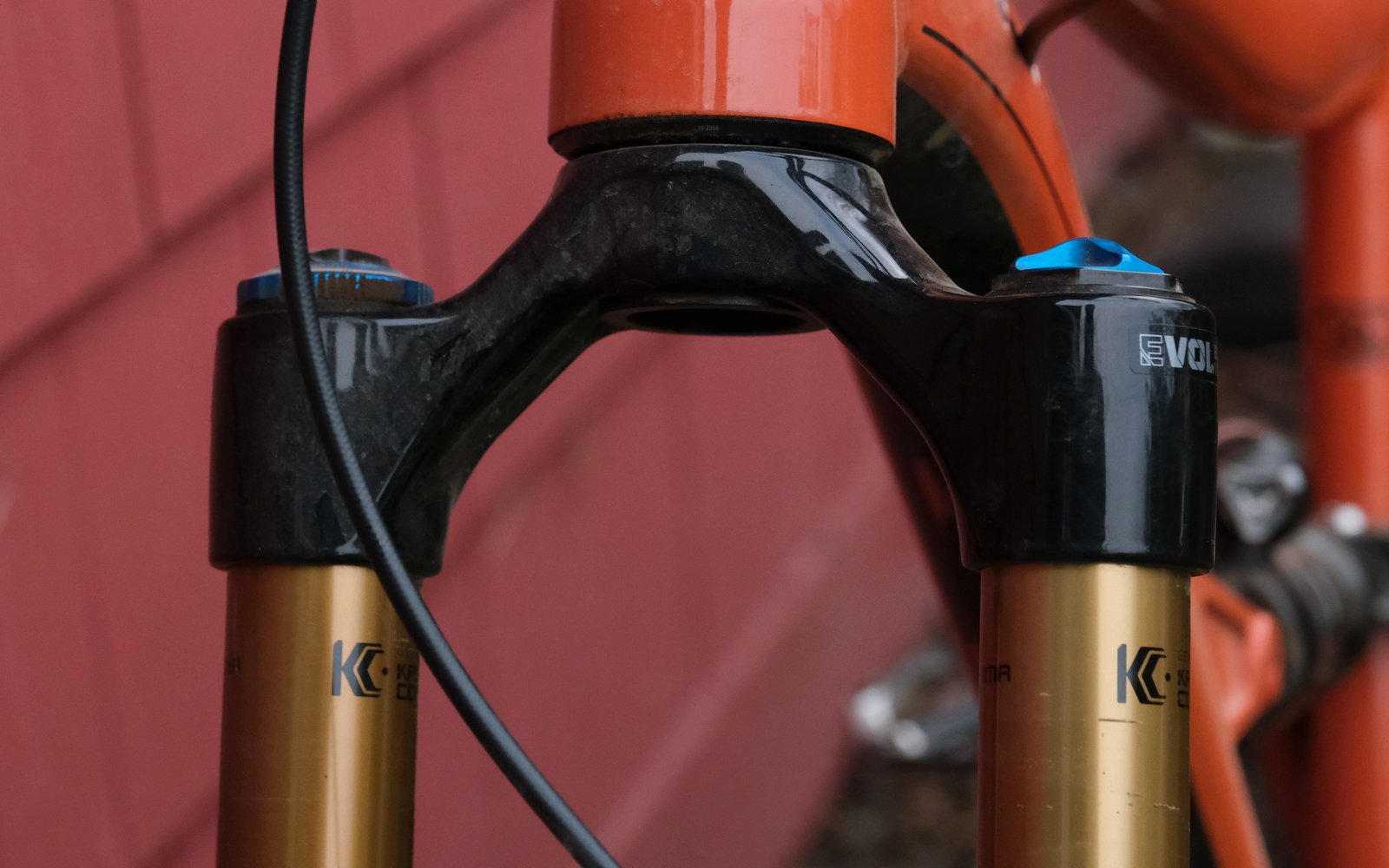
I figured I should probably provide some detailed looks at this new crown. I did plan on some comparison photos, but lost both the Spectral and the Arrival before I knew I'd be doing this. Wait...hold on a second!
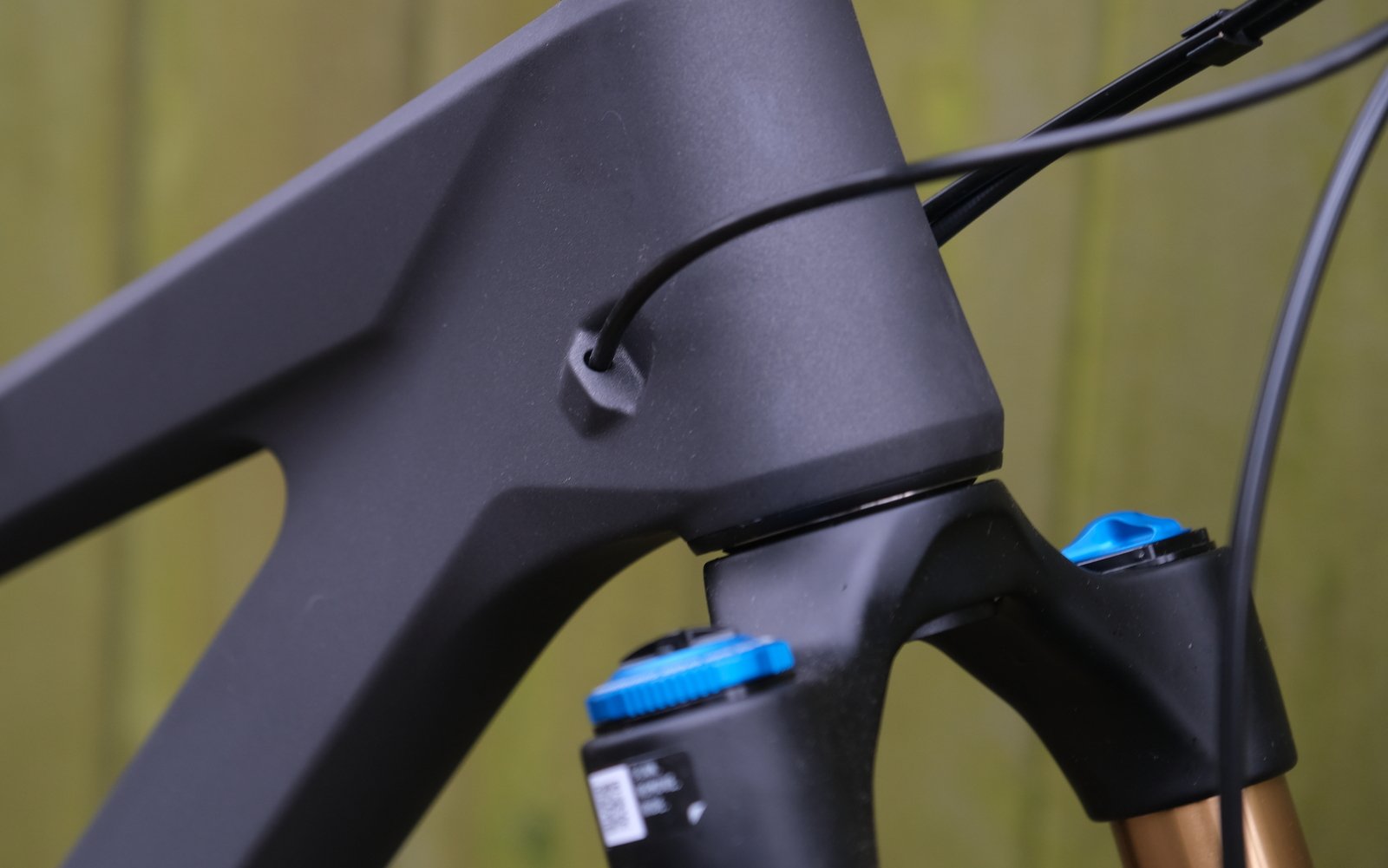
I mean, here's the 2022 and you can kind of see it here. Does that look shallower? It looks different, for sure.
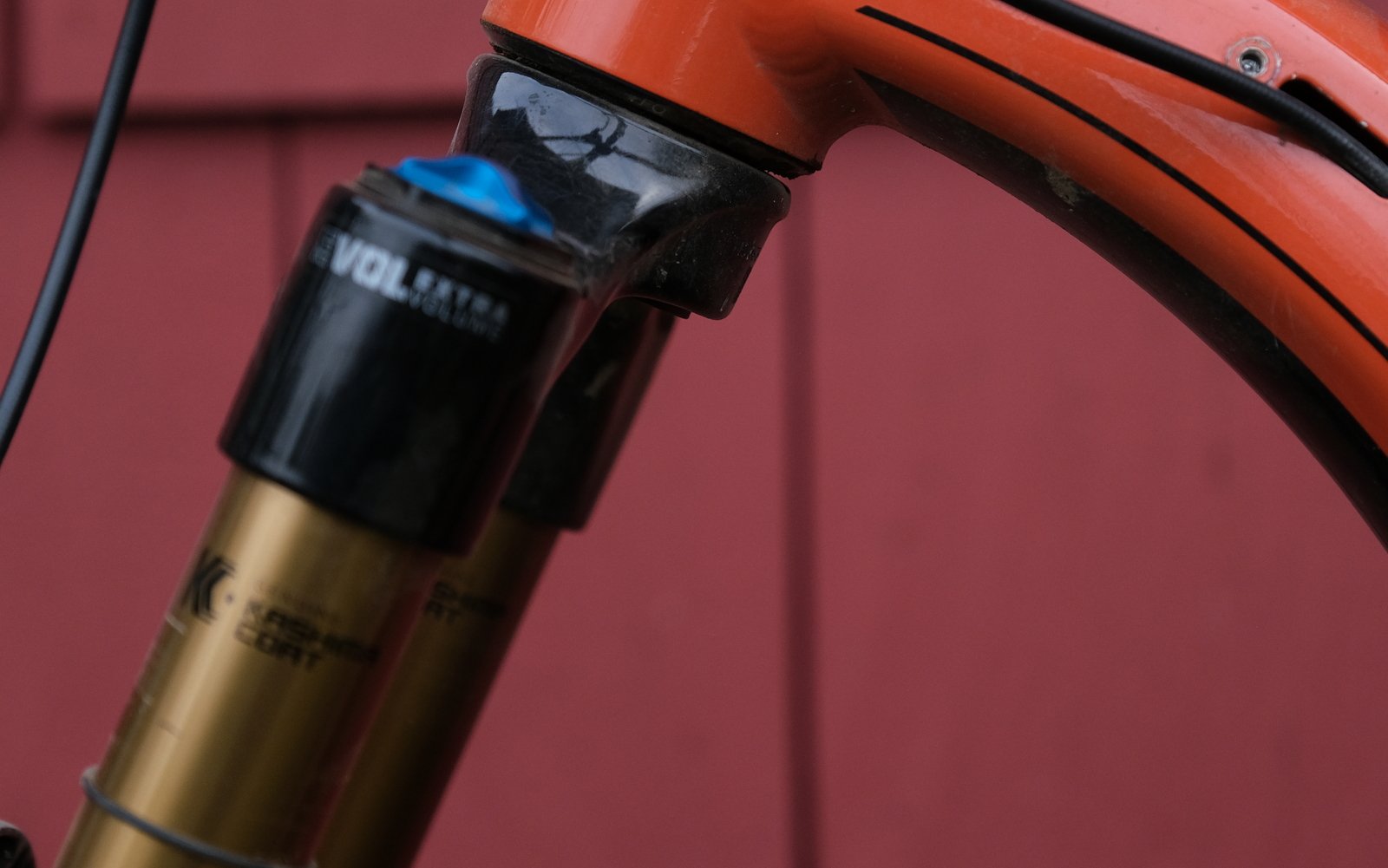
One more look at that crown. I sort of ran out of things that I wanted to take pictures of.
36 FACTORY GRIP2 FORK FEATURES
- Upper Tube Finish. Kashima Coat
- Air Channels Yes
- Bleeders Yes
- Floating Axle Yes
- Rotor Size 180 direct Post Mount, Up to 230 compatible
- Mud Guard Mount Optional FOX 36/38 Mud Guard with sturdy 4-point direct-mount attachment
- Air Spring FLOAT EVOL
- Steerer 1.5 TaperStarting
- Weight 4.28 lb / 1942g (F-S 36, 29”, 160mm Travel, KaboltX 110, 3 Pos-Adj)*
* Fork weights shown are at 165mm steerer length with star fangled nut and disc brake guide installed.
Longer Term
It’s also a good idea to ride a fork a few times before you start going too crazy on settings. I’ve experienced a few forks lately that felt quite different after a few rides after they broke in, and it can drive you crazy if you try to chase settings through this time. After 3-4 rides on the 36 I felt comfortable enough to start making a few tweaks. I had decided that I really liked the additional support of a few extra psi and a spacer, but I was leaving a fair amount of travel on the table on the majority of my rides. I decided to open up the HSC a few clicks.
This proved to be all that I needed to hit the sweet spot on this fork. I still had all of that nice, firm support at higher speeds, but things were just a bit more forgiving and I was now using a more acceptable amount of travel. I still had a nice hunk of travel in reserve, which came into play once things got a little bit spicy. It felt like the right balance.
We’ve talked a lot about the fork being firmer, and at no point has that felt like any sort of compromise. While I mentioned above how plush the DVO is off the top, this isn’t something that I’ve ever put any particular effort into chasing, or something that I feel has much of an impact on my riding. So, there’s nothing all that noticeable about how this fork handles small stuff early in the travel, but it doesn’t seem to matter all that much.
Comparing the 36 to a chunkier single crown like a 38 or a Zeb, my perspective has shifted a bit as well. I’ve liked pretty much every bike that I’ve ridden with the new crop of chonky forks on the front, and I’m pretty sure that’s not a coincidence. I think long travel single crown bikes have gotten better since Fox and Rock Shox introduced these forks. All of the added girth just works better when terrain gets nasty, both in terms of keeping your wheel pointed in the right direction and with suspension performance. Why I mention this is that it seems like the reputation of the 36 (and Lyrik) has taken a hit since its big brother came on the scene. It’s no longer the fork you look to for the nastiest riding. Of course, some CSU tweaks and a few extra psi hasn’t fundamentally altered the 36, but at the same time I feel like I’m re-evaluating this fork a bit. I’m certainly not proposing putting one on the front of a Norco Shore, but I am feeling pretty confident about having one on the front of the Ibis Ripmo. It feels like the absolute perfect tool for the job that this bike does. It handles everything that I want to throw at it on this bike, without feeling like overkill.
On the durability front, I had no challenges with this fork. It’s trucking along nicely after a long summer/fall of riding with no creaks or groans. I didn’t have a challenge with any of my previous Fox 36 CSU’s, but if you’re the kind of rider that did, well, it’s stronger now.
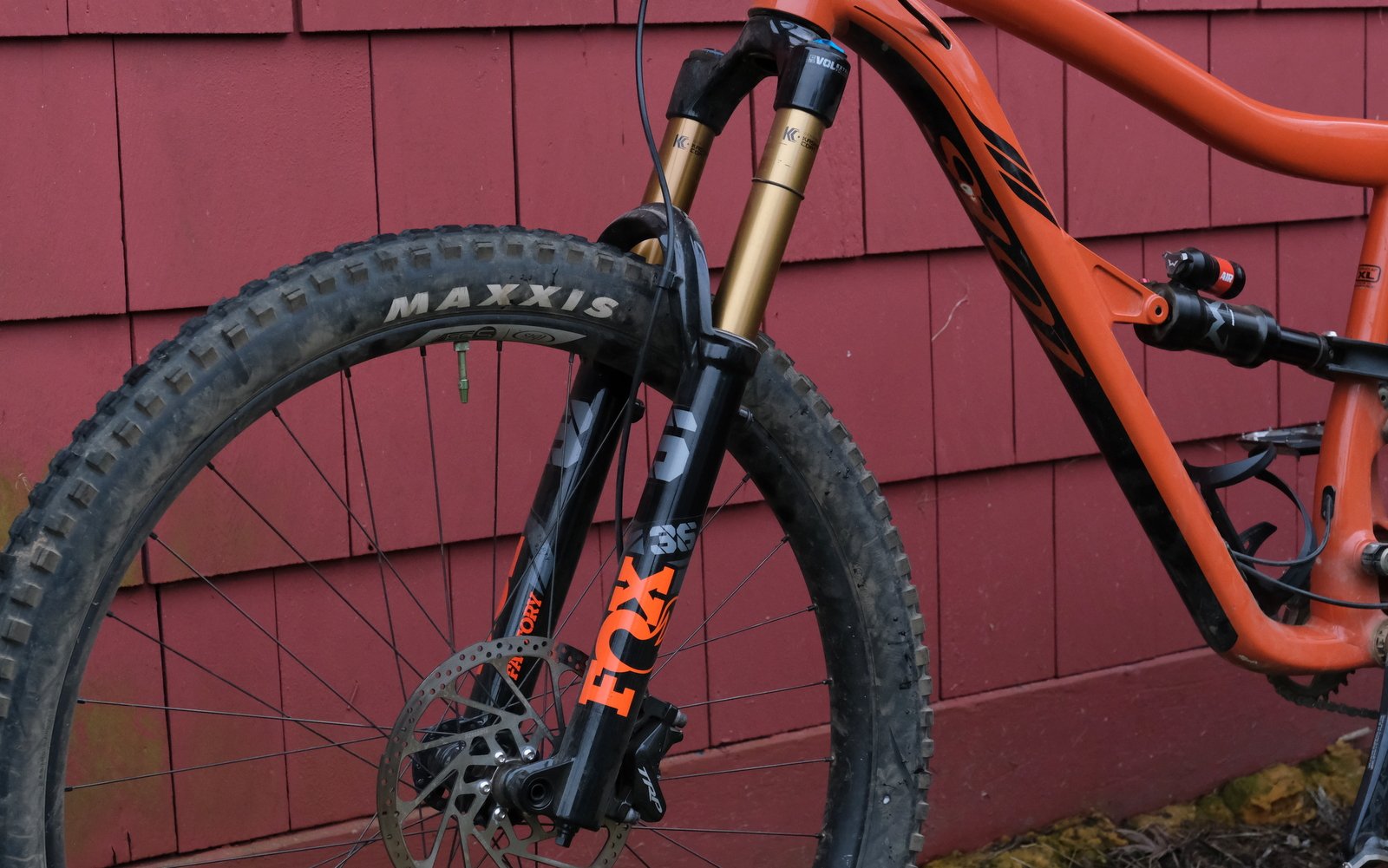
Another view of the fork.
Conclusions
Similar to what I said with the Marzocchi Bomber Rear Shock, upgrading your suspension is an expensive way to improve performance. If you have a decent fork or shock on your bike already, you’re going to get more bang for your buck by pursuing maintenance and tuning rather than new parts. Yes, the brand new 36 felt nicer than the somewhat tired DVO Onyx that came off the bike, but my tuning strategy was also different. If I were to re-mount the Onyx on the front of this bike, I’d probably send it in for service first and then start fresh with settings, taking what I learned with the 36 and applying it to that fork. I’m confident that this re-calibration would leave me pretty happy with the end result.
Now, if you are looking for a new fork or have one coming on a new bike, the 36 won’t leave you much to complain about.
The new(ish) MY2023 Fox 36 is available in specific combinations of 27.5 and 29” wheel sizes, with 150 or 160mm of travel, in Factory or Performance Elite models, with 37, 44 or 51mm offsets, and Grip2 or Fit 4 damping. Prices start at US$889/CAD$1149 and go all the way up to US$1149/CAD$1499

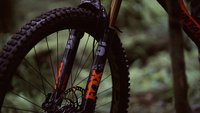









Comments
bishopsmike
1 year, 2 months ago
This review is why I love NSMB:
- It's a really very good fork
- So are other brands
- Most model updates are barely noticeable
- Maintenance and tuning are more important than bling
I honestly can't think of a high-end fork that I wouldn't be happy to see on the front of my bike: 36, Lyrik, Diamond, Mezzer, Ribbon, Durolux, Selva, Era, Z1... My purchase decisions usually come down to the struggle between wanting something easy to locate parts vs. my urge for something "boutiquey". It's an awesome time we're in!
Reply
DangerousDave
1 year, 2 months ago
Bring back the 170mm travel 36s and Lyriks.
Reply
kcy4130
1 year, 2 months ago
As a big guy who rides hard (i.e. tall dad bod and poor line choices) I'd like a 140, 130 maybe even down to 120mm 36. I've a 120mm Z2 which is 34 based on my hardtail and it's pretty good, but too flexy fore/aft at times.
Reply
Guy Elliott
1 year, 2 months ago
I’m with you. I run a 38 at 150mm on my hardtail for this very reason
Reply
Taiki
1 year, 2 months ago
They don't sell them at those travel numbers out of the box, but you can drop a 36 down to 140mm or 130mm with a simple air shaft swap.
Reply
jrkirkwo
1 year, 2 months ago
It doesn't come stock in more than 160mm, but they do still make 170mm airshafts for the new 36.
Reply
Tjaard Breeuwer
7 months, 2 weeks ago
I just looked, Fox still has the 170 mm air spring for the 36
Reply
Kos
1 year, 2 months ago
"As well, I truly hate the phrase “mid stroke support.”
I love you.
My slammin, big hucking days are behind me. I too love this fork, but find the pedestrian Grip damper to be more plush.
Reply
doodersonmcbroseph
1 year, 2 months ago
the plain grip damper is really good, I don't know why so many people seem to look down on it
Reply
IslandLife
1 year, 2 months ago
"Marketing"
Reply
Lu Kz
1 year, 2 months ago
I owned a bunch of bikes with "Grip 1" on them and never felt compelled to upgrade. Am I happy with the Grip 2 forks I have now? Absolutely, they're incredible, but I don't think they're worth the upgrade price if you already own a Grip 1 fork.
I think people's biggest gripes with them are:
1. the compression knob looks cheap on purpose so people think the forks are cheap.
2. A bunch of companies used Grip 1 forks to min-max builds deeper than what some people would like. You'd see some seriously premium price points still coming with Grip 1 with excellent stuff elsewhere because those companies believed in the product and spent your money on other bits hanging off the bike. Personally, I'd be inclined to agree with the project managers on this one - but buying a 7-8k CAD bike with a Grip 1 fork (that again, has a dial that makes the whole front end look cheap when you notice it) absolutely turns certain people off those builds.
Reply
Kos
1 year, 2 months ago
I know it's an unpopular position -- ex-racer still hanging on a bit -- but I love the Grip1's ease of "almost lockout".
Reply
doodersonmcbroseph
1 year, 2 months ago
Yeah I guess sometimes people can't see the forest for the trees. I thought the blue aluminum knob is quite tidy looking, it's not one of those horrific plastic knobs that inevitably break. On the bright side I suppose the rest of us will be able to pickup grip1 forks on the cheap from all those 'swapped out the fork upon purchase' people.
Reply
Dan Lees
1 year, 2 months ago
I'm on a Z1 with Grip Sweep Damper and had it my head i would end up upgrading to a Grip2 down the line.
I have come to the conclusion you really really don't need to, though the GOLD lever is truly nasty looking.
Reply
Znarf
1 year, 2 months ago
I have a solid month on the exact same fork with a 170mm air shaft. Compared to my 180mm Lyrik with a Luft-Fusion air cartridge it is much less comfortable so far and offers less traction, but feels more controlled on repeated rough hits.
With the stock Fox gold lower lube it becomes almost unridable below 5deg Celsius.
Swapped the air side to 10ML Rock Shox 0w30 and now it’s much better in cold weather.
I will have the bushings checked/resized at the next service. And yes, forks are amazing nowadays.
I love all the features Fox built in (floating axle, air bleeders) and miss them on my Lyrik.
But honestly, the Lyrik with its „simple“ feature set works absolutely incredible. Setup is shockingly easy.
I am curious what I’ll think after a full season on the 2023 36.
(My last couple of 36s started MAJOR creaking after a couple of months.)
Reply
Mammal
1 year, 2 months ago
You can mix the Fox Gold with 0W synthetic motor oil (both sides of the lowers). You still get most of the advantages of all the slippery additives that the Gold provides, but it greatly increases the cold weather performance.
Reply
the prophet
1 year, 2 months ago
You still want the telfon 5wt on the damper side as it ingests it. 5wt works fine in the cold with 0w motor oil on the air side.
If any gold oil gets sucked into the damper, it turns it into a weird foamy slurry when mixed with the 5wt teflon. Have seen a few of them.
Reply
JVP
1 year, 2 months ago
So great to hear they upgraded the CSU. I’m one of those people. My goal is for single crown forks to make it one year and then sell. Hopefully the 36 can now hit that benchmark.
Bring on the 160-180 dual crowns!
Reply
Guy Elliott
1 year, 2 months ago
Fox’s 18 month warranty covering CSU failures must be killing then - typically go through 2 myself in that period.
Reply
Velocipedestrian
1 year, 2 months ago
It's not killing Fox, it's built into the purchase price.
Reply
JVP
1 year, 2 months ago
Didn't know they had 18month warranty, though I've avoided Fox recently. Manitou does 2 years. I've had 2 forks in the last 8-ish years make it to 1 year without creaking, one was barely past that. This is from multiple brands. A whole pile started creaking within a few months, Fox being the worst.
I'm not even that heavy or going huge. Just a hard-riding middle aged dude who is 195 lbs. Sure, I like to smash, but I'm just your everyday expert.
The single crown interface we use today DOES NOT WORK. It needs an industry-wide redesign to a new standard. It's the one last piece of shit design on our otherwise amazing and reliable bikes.
Reply
Ripbro
1 year, 2 months ago
I was very surprised at the difference changing front forks can make. Can they make you a faster rider? In my experience yes. I had a DVO diamond on my ripmo AF, and could never quite get the fork feeling great. Tried reshimming the damper a few times after speaking with Rob at DVO, but still couldn’t get the fork to feel great on fast chunk. Bought a different fork, and I was much faster riding trails I ride all the time. This was especially noticeable going into corners much faster than with my previous setup. Sometimes an upgrade isn’t really an upgrade, but I recommend trying different forks if you can’t get your current fork sorted and have put in the time to try and get it there.
Reply
Jenkins5
1 year, 2 months ago
Good review, but this is why I ride a DVO Onyx and I'm keeping it....Fox is nice for sure, but I've had too many creaky crowns over the past number of years to go back....
Reply
Mammal
1 year, 2 months ago
I love my Onyx. I also love the cost savings of at-home-maintenance.
Reply
Tehllama42
1 year, 2 months ago
There's a fair bit to be said for us tall guys to have the weight distribution such that a somewhat softer fork (especially off the top) is what works best for making grip, especially for the long-of-leg variety where we're really leaning on the rear shoulder knobs to finish executing turns anyway just because that's where our mass distribution puts us.
I do wish it would makes sense for NSMB to do a comparison of a refreshed fork with a tune versus some brand new OEM product, but I don't exactly see manufacturers lining up to be part of that comparison, unless the specific thing they're trying to show off is how adjustable and versatile their suspension offering(s) are.
Reply
Merwinn
1 year, 2 months ago
Do the CSUs still fail every single time they're brought in for service?
Reply
Please log in to leave a comment.